Abstract
During a two-year period of observation Bacteroides species were isolated from specimens of pus and vaginal swabs from 115 patients in this hospital. Thirty-five representative strains proved on examination to be Bacteroides fragilis.
Minimal inhibitory and minimal bactericidal concentrations of six antibiotics for these strains were determined. All strains were resistant to streptomycin, neomycin, and polymyxin, slightly sensitive to penicillin and ampicillin, and fully sensitive to tetracycline, chloramphenicol, erythromycin, and lincomycin. The minimum bactericidal concentrations of chloramphenicol, erythromycin, and lincomycin were two to four times the minimal inhibitory concentrations. Tetracycline failed to exert any consistent bactericidal effect.
The treatment of patients with infections caused by B. fragilis is discussed in the light of the findings in vitro.
Full text
PDF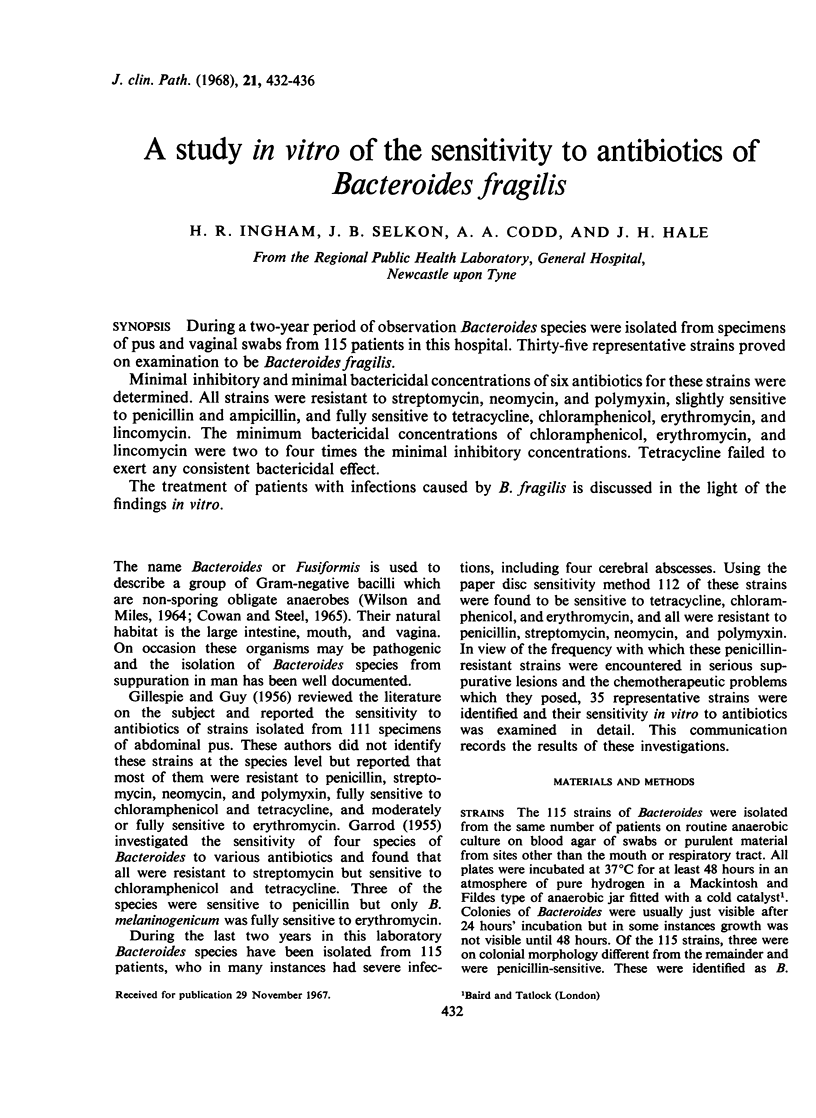
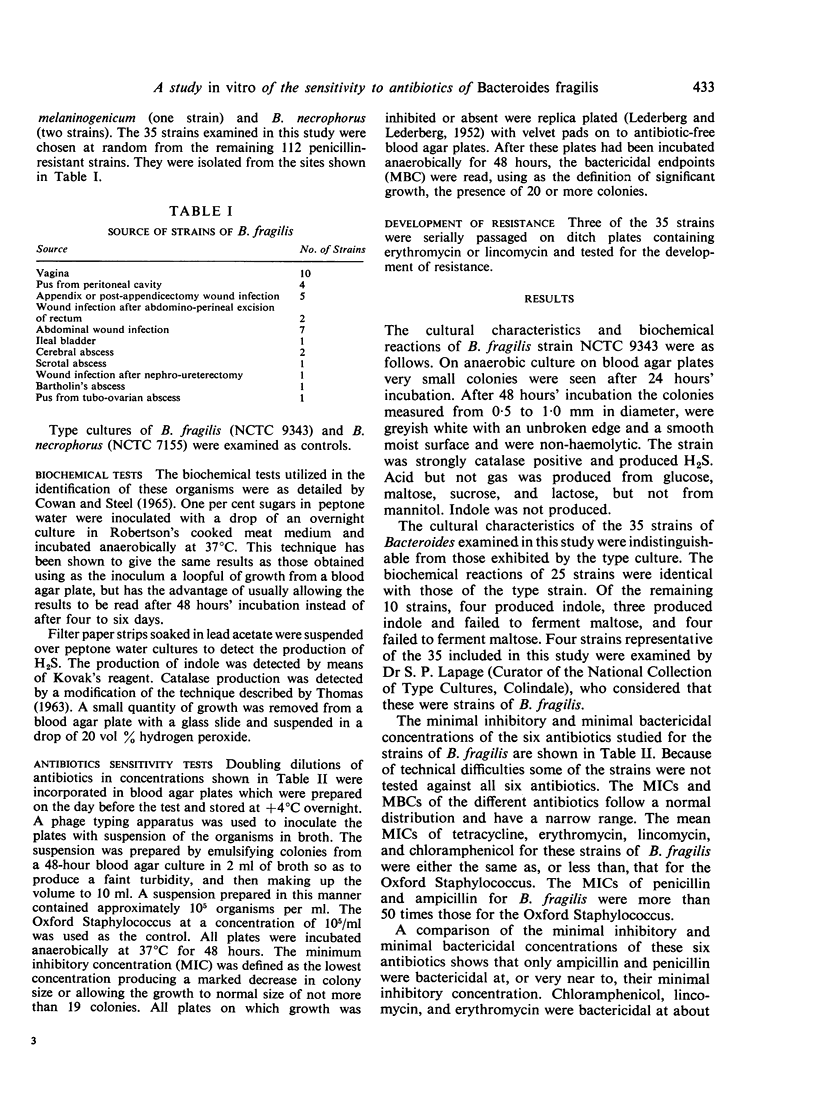
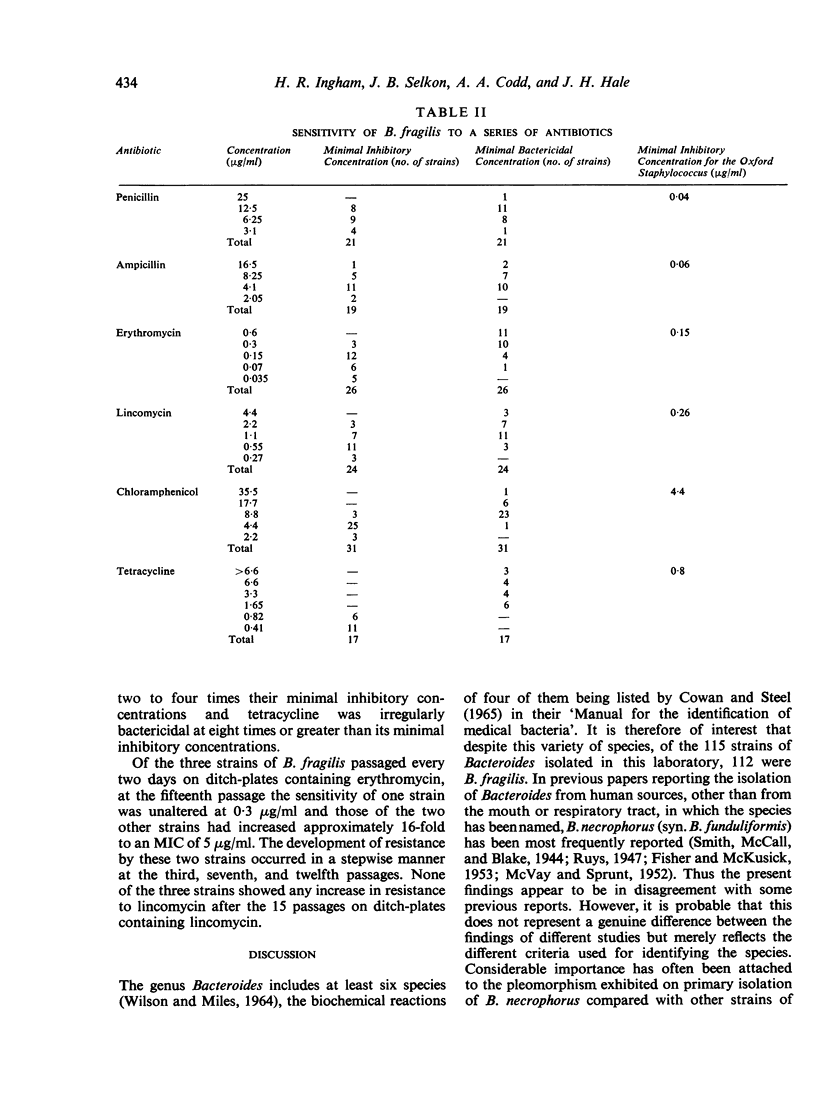
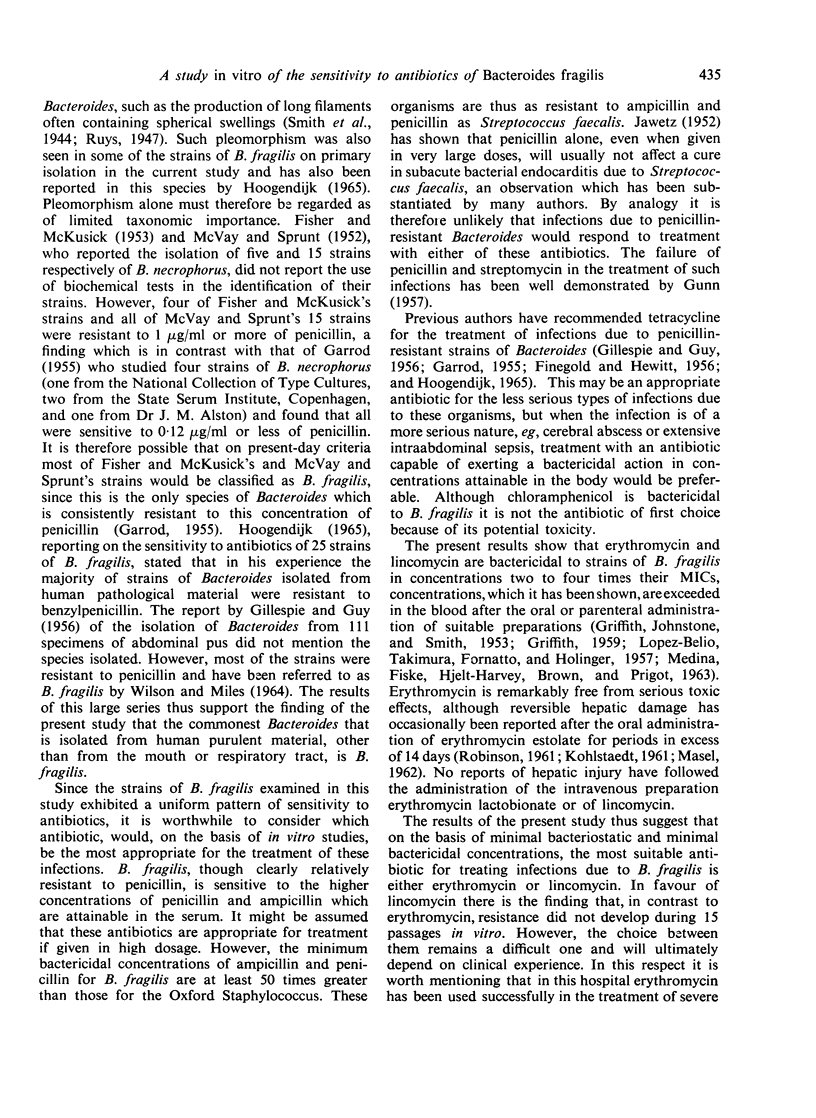
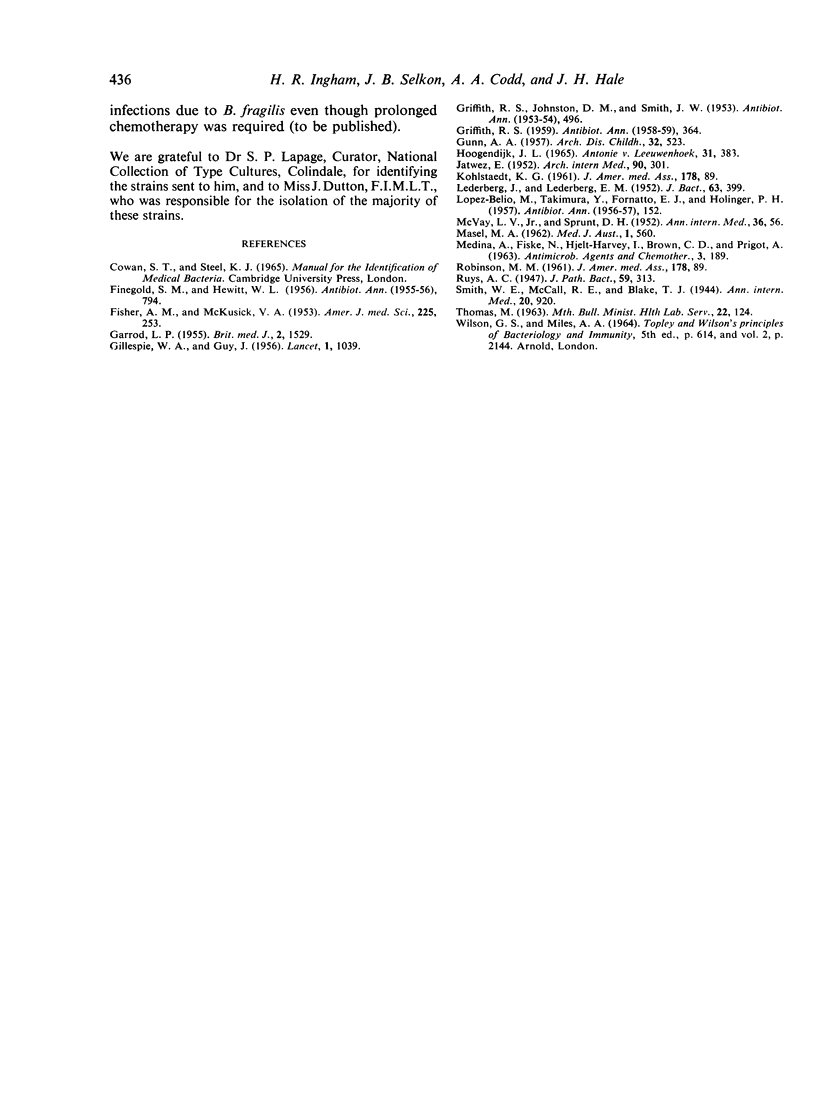
Selected References
These references are in PubMed. This may not be the complete list of references from this article.
- FISHER A. M., MCKUSICK V. A. Bacteroides infections; clinical, bacteriological and therapeutic features of fourteen cases. Am J Med Sci. 1953 Mar;225(3):253–273. doi: 10.1097/00000441-195303000-00004. [DOI] [PubMed] [Google Scholar]
- GARROD L. P. Sensitivity of four species of bacteroides to antibiotics. Br Med J. 1955 Dec 24;2(4955):1529–1531. doi: 10.1136/bmj.2.4955.1529. [DOI] [PMC free article] [PubMed] [Google Scholar]
- GILLESPIE W. A., GUY J. Bacteroides in intra-abdominal sepsis: their sensitivity to antibiotics. Lancet. 1956 Jun 30;270(6931):1039–1041. doi: 10.1016/s0140-6736(56)90802-9. [DOI] [PubMed] [Google Scholar]
- GUNN A. A. Bacteroides infection in the surgery of childhood. Arch Dis Child. 1957 Dec;32(166):523–529. doi: 10.1136/adc.32.166.523. [DOI] [PMC free article] [PubMed] [Google Scholar]
- Hoogendijk J. L. Resistance of some strains of Bacteroides to ampicillin, methicillin and cloxacillin. Antonie Van Leeuwenhoek. 1965;31(4):383–385. doi: 10.1007/BF02045917. [DOI] [PubMed] [Google Scholar]
- LEDERBERG J., LEDERBERG E. M. Replica plating and indirect selection of bacterial mutants. J Bacteriol. 1952 Mar;63(3):399–406. doi: 10.1128/jb.63.3.399-406.1952. [DOI] [PMC free article] [PubMed] [Google Scholar]
- LOPEZ-BELIO M., TAKIMURA Y., FORNATTO E. J., HOLINGER P. H. Erythromycin in the bronchial tree after oral, intravenous, and aerosol administration. Antibiot Annu. 1956:152–158. [PubMed] [Google Scholar]
- MASEL M. A. Erythromycin hepato-sensitivity: a preliminary report of two cases. Med J Aust. 1962 Apr 14;49(1):560–562. [PubMed] [Google Scholar]
- MEDINA A., FISKE N., HJELT-HARVEY I., BROWN C. D., PRIGOT A. ABSORPTION, DIFFUSION, AND EXCRETION OF A NEW ANTIBIOTIC, LINCOMYCIN. Antimicrob Agents Chemother (Bethesda) 1963;161:189–196. [PubMed] [Google Scholar]
- McVAY L. V., Jr, SPRUNT D. H. Bacteroides infections. Ann Intern Med. 1952 Jan;36(1):56–76. doi: 10.7326/0003-4819-36-1-56. [DOI] [PubMed] [Google Scholar]


